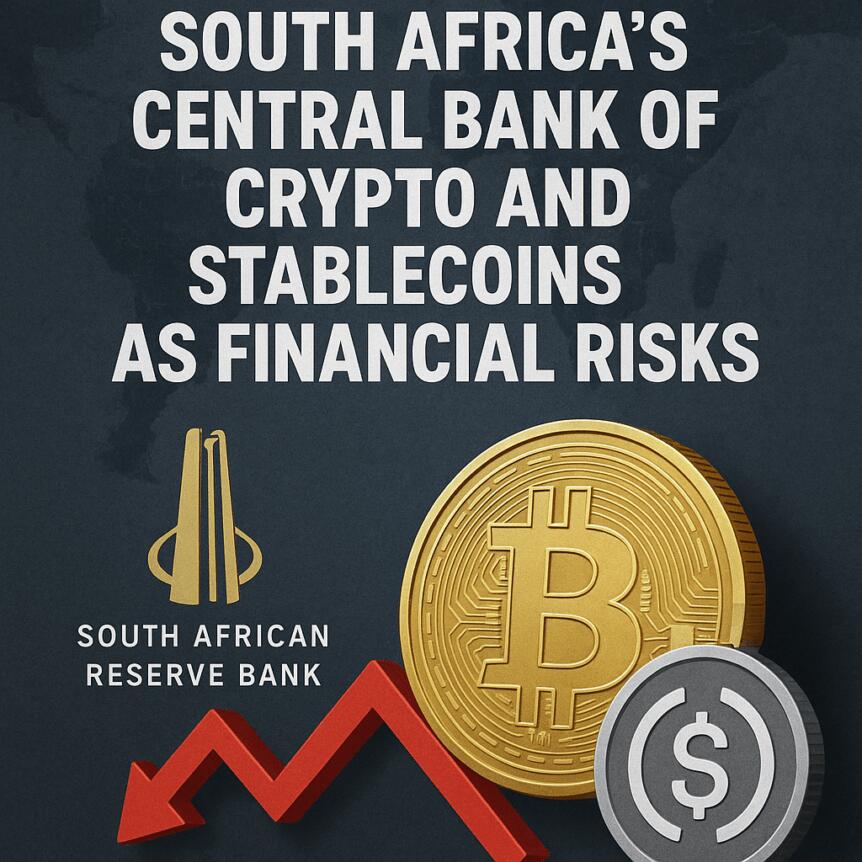South African Reserve Bank Flags Rising Risks from Digital Assets
The South African Reserve Bank has raised concerns about the rapid growth of digital assets and stablecoins within the country, emphasizing emerging risks associated with these financial innovations. The central bank’s latest financial stability report highlights the increasing adoption and potential regulatory challenges posed by this digital shift.
Key Takeaways
- The number of users on South Africa’s largest crypto exchanges reached 7.8 million by July 2025, with around $1.5 billion held in custody at the end of 2024.
- Crypto assets such as Bitcoin, XRP, Ether, and Solana continue to see significant activity, but stablecoins are experiencing a structural shift in trading volume, overtaking traditional cryptos as preferred trading pairs.
- The decentralized and borderless nature of cryptocurrencies may enable circumvention of exchange control regulations in South Africa.
- Regulatory frameworks for cryptocurrencies remain incomplete, with the Financial Stability Board noting the absence of comprehensive regulation for stablecoins, raising concerns over potential systemic risks.
Tickers mentioned: Bitcoin, XRP, Ether, Solana
Sentiment: Cautiously bearish on regulatory gaps
Price impact: Neutral — growth persists, but regulatory uncertainty looms
Market context: Growing adoption of digital assets is influencing financial stability concerns amid evolving regulatory landscapes
Growing Adoption and Regulatory Concerns
The South African Reserve Bank’s recent analysis underscores the increasing integration of crypto assets in the local financial ecosystem. The report notes that as of July 2025, the country’s top three crypto exchanges collectively serve approximately 7.8 million users, with holdings totaling around $1.5 billion by year-end 2024. These numbers reflect a significant shift in digital asset engagement, driven partly by the appeal of stablecoins, which have seen a notable surge in trading volume since 2022.
While cryptocurrencies like Bitcoin, XRP, Ether, and Solana remain actively traded, stablecoins, especially those pegged to U.S. dollars, have become dominant trading pairs due to their lower volatility. The report states, “Whereas Bitcoin and other popular crypto assets were the main conduit for trading crypto assets until 2022, USD-pegged stablecoins have become the preferred trading pair on South African crypto platforms.”
The central bank warns that the borderless nature of crypto assets may facilitate circumvention of the country’s exchange control regulations, potentially weakening regulatory oversight. Currently, South Africa lacks a comprehensive framework for stablecoin regulation, with only partial rules in place for cryptocurrencies. The Financial Stability Board also reports that the country’s regulatory environment remains underdeveloped, raising concerns about unmonitored systemic risks.
Policy Divergence and Future Outlook
Despite the caution expressed by the Reserve Bank, South African policymakers appear more optimistic. The Financial Sector Conduct Authority designated cryptocurrencies as financial products in 2022 and has issued licenses to crypto firms to operate legally within the country. This shift signifies a progressive approach towards integrating digital assets into the formal financial system.
As the country navigates this evolving landscape, the key challenge remains implementing regulatory structures that safeguard financial stability while fostering innovation. The balance between embracing digital assets and mitigating systemic risks continues to shape South Africa’s approach to cryptocurrency regulation.



